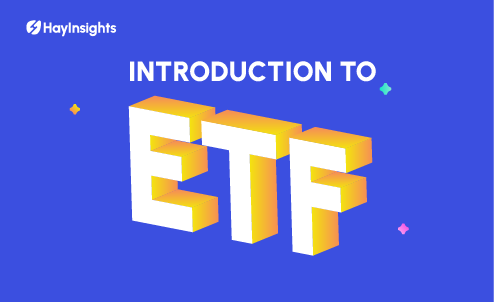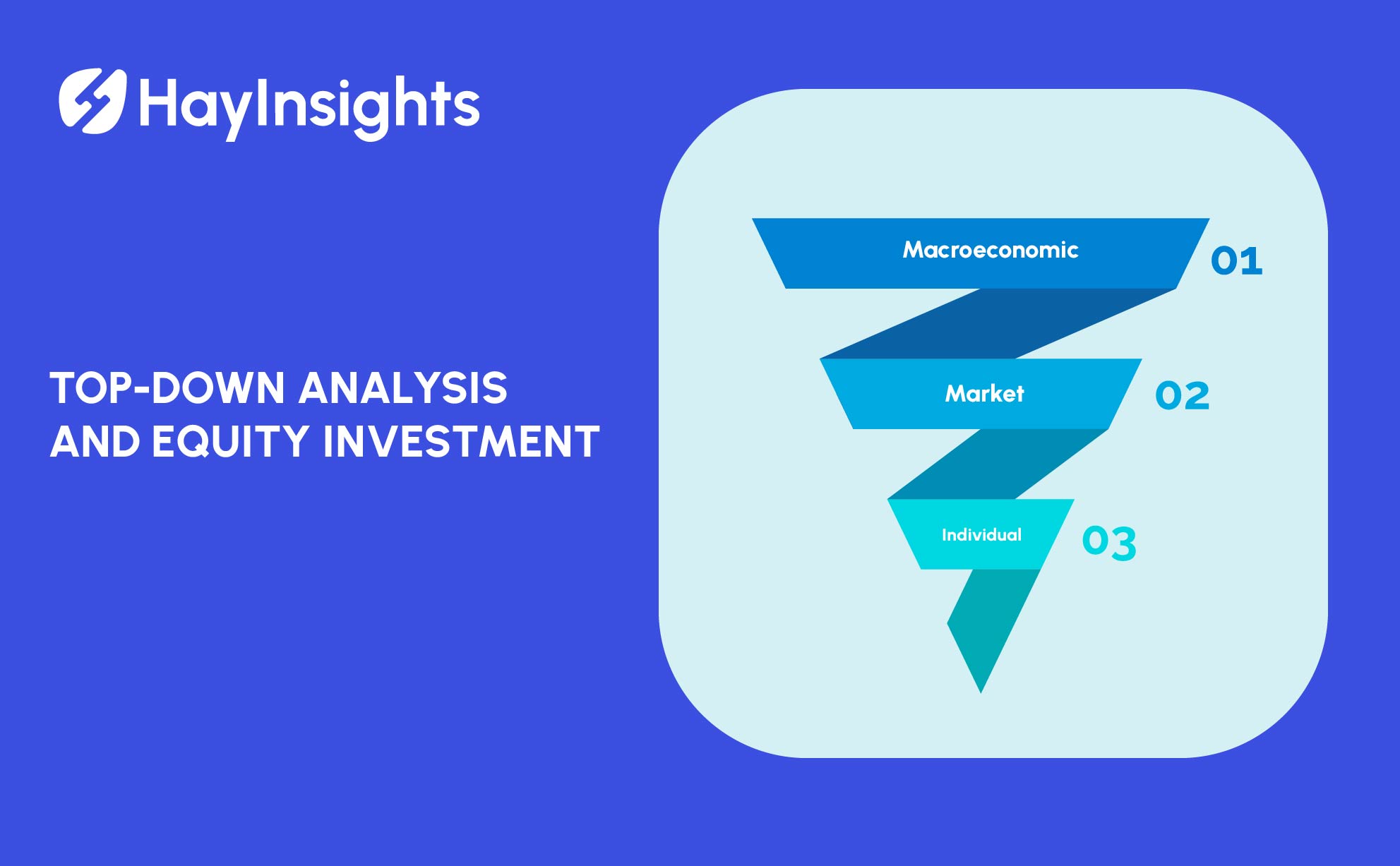
Exchange-Traded Fund: A Guide to Fund Certificates Investment
In today’s ever-evolving world of investing, it is essential to stay informed about the various opportunities available to grow your wealth. One such investment vehicle that has gained immense popularity in recent years is the Exchange-Traded Fund, more commonly known as an ETF.
These funds have revolutionized the way individuals and institutions invest, offering a convenient and cost-effective way to diversify their portfolios. In this article, we will delve into the fundamentals of ETFs, exploring what they are, how they work, and why they have become such favored instruments for both seasoned investors and beginners alike. By understanding the concept of fund certificates and how they relate to smart investments, you can navigate the world of ETFs with confidence and make informed decisions that align with your financial goals. So, let’s dive into this comprehensive guide to ETFs and discover the potential they hold for your investment strategy.
What are ETFs and Why Should You Consider Investing in Fund Certificates?
ETFs, or exchange-traded funds, have gained popularity in recent years as an investment option for both individual and institutional investors. Essentially, an ETF is a type of fund certificate that allows investors to gain exposure to a diversified portfolio of stocks or other assets. Unlike mutual funds, ETFs trade on stock exchanges throughout the day, just like individual stocks, making them highly accessible and easy to buy and sell.
One of the main advantages of investing in ETFs is their low cost. Since ETFs are passively managed, they typically have lower management fees compared to actively managed funds. This means that investors can keep a larger portion of their returns, boosting their overall investment performance. Additionally, ETFs are known for their transparency, as they disclose their holdings on a daily basis. This allows investors to have a clear understanding of what they are investing in and make informed decisions.
Another reason to consider investing in ETFs is their flexibility. With ETFs, investors have the opportunity to gain exposure to different asset classes, such as stocks, bonds, commodities, and even specific sectors or regions. This flexibility allows investors to customize their portfolios according to their investment objectives and risk tolerance. Furthermore, ETFs offer diversification benefits, as they hold a basket of securities, reducing the potential impact of a single security’s performance.
ETFs provide an accessible, cost-effective, and flexible investment option for individuals and institutions alike. With their low management fees, transparency, and diversification benefits, ETFs have become a popular choice for investors looking to build a well-rounded portfolio. Whether you’re a seasoned investor or just starting out in the investment space, considering ETFs as part of your investment strategy can potentially enhance your overall returns while providing exposure to a wide range of assets.
How to Choose the Right ETFs for Your Investment Portfolio
When it comes to building an investment portfolio, one popular option is investing in Exchange-Traded Funds (ETFs). ETFs are fund certificates that can be traded like stocks on stock exchanges. They offer a great way for individuals to diversify their investments and gain exposure to a wide range of assets. However, with so many ETFs available, choosing the right ones for your portfolio can be a daunting task.
The first step in choosing the right ETFs is to clearly define your investment goals and risk tolerance. Are you looking for long-term growth or income? Are you comfortable with a higher level of risk or do you prefer a more conservative approach? Once you have a clear understanding of your objectives, you can start identifying ETFs that align with your investment strategy.
Next, it’s important to consider the underlying assets of the ETFs you are considering. Some ETFs offer exposure to broad market indexes, such as the Nikkei 225, while others focus on specific sectors or regions. It’s important to research the underlying assets to ensure they align with your investment goals. Additionally, consider the expense ratio of the ETF. Lower expense ratios can help maximize returns over time.
Lastly, it’s crucial to evaluate the track record and performance of the ETFs you are considering. Look at the historical performance as well as how the ETF has performed during different market conditions. You can also consider the size and liquidity of the ETF, as larger and more liquid funds tend to have lower trading costs. Remember, past performance is not a guarantee of future results, but it can provide valuable insights.
In conclusion, choosing the right ETFs for your investment portfolio requires careful consideration of your goals, risk tolerance, underlying assets, expense ratio, and track record. Take your time to research and evaluate different options before making a decision. And remember, diversifying your investments across multiple ETFs can help mitigate risk and optimize returns.
ETF vs. Mutual Funds: Which Fund Certificate is Right for You?
Investing in the stock market can be overwhelming, especially when it comes to choosing the right type of fund certificate for your investment. Two popular choices are ETFs (Exchange Traded Funds) and mutual funds. Both offer opportunities for diversification and professional management, but they have some key differences that can impact your investment strategy.
ETFs are fund certificates that can be bought and sold on stock exchanges, just like individual stocks. These funds typically track a specific index or sector\. They have a low expense ratio, making them a cost-effective option for investors. They also offer intraday trading, allowing you to buy or sell shares throughout the trading day. This liquidity provides flexibility for active traders and short-term investors.
On the other hand, mutual funds are professionally managed pooled investments that are priced at the end of the trading day. Unlike ETFs, mutual funds do not trade on exchanges and can only be bought or sold at the net asset value (NAV). Mutual funds offer a wide range of investment options, including equities, bonds, and money market funds. They are typically actively managed, meaning that fund managers actively make investment decisions on behalf of investors. This hands-on approach can be beneficial for investors seeking expert guidance.
When deciding between ETFs and mutual funds, it is important to consider your investment objectives, risk tolerance, and time horizon. ETFs may be more suitable for investors with a shorter time horizon and a desire for more control over their investments. On the other hand, mutual funds may appeal to investors looking for professional guidance and long-term investment strategies.
Ultimately, the choice between ETFs and mutual funds depends on your individual preferences and goals. It is recommended to consult with a financial advisor or do thorough research before making any investment decisions. By understanding the strengths and limitations of each fund certificate, you can make an informed choice that aligns with your investment strategy and financial goals.
Exploring Different Types of ETFs: Diversify Your Investments
Investing is a fundamental aspect of financial planning, and one popular investment option that many individuals consider is Exchange-Traded Funds (ETFs). ETFs are a type of fund certificate that can be bought and sold on stock exchanges. They combine the benefits of a mutual fund with the tradability of a stock. ETFs offer investors the opportunity to diversify their investments across various asset classes, sectors, or even geographic regions.
One key advantage of ETFs is their flexibility. Unlike traditional mutual funds, investors can buy or sell ETFs throughout the trading day, enabling them to react quickly to market movements. This also means that investors can capitalize on intraday price fluctuations. Furthermore, ETFs often have lower expense ratios compared to mutual funds, which can make them more attractive to cost-conscious investors.
Another benefit of investing in ETFs is their ability to provide exposure to specific themes or investment strategies. For example, there are ETFs that focus on renewable energy, technology companies, or emerging markets. This allows investors to tailor their portfolios based on their personal interests and beliefs. Additionally, ETFs can be an effective tool for gaining exposure to specific sectors or industries that might not be easily accessible through individual stock picking.
In conclusion, ETFs offer investors a convenient and cost-effective way to diversify their investment portfolios. With their tradability, flexibility, and the ability to target specific themes or sectors, ETFs have become a popular choice for many investors. However, like any investment, it is essential to conduct thorough research and consider factors such as expense ratios, underlying assets, and risk factors before investing in any ETF. As always, it is recommended to consult with a financial advisor before making any investment decisions.
The Role of ETFs in Passive Investment Strategies: A Smart Approach for Long-Term Gains
In today’s fast-paced and ever-changing investment landscape, it’s imperative to have a strategy that can provide long-term gains while minimizing risk. That’s where Exchange-Traded Funds (ETFs) come in. These innovative investment vehicles have gained popularity in recent years, offering investors a smart approach to passive investing.
ETFs are fund certificates that allow investors to buy a diversified portfolio of assets, much like a mutual fund. However, unlike mutual funds, ETFs are traded on an exchange, just like individual stocks. This means that investors can easily buy and sell ETFs throughout the trading day, providing them with flexibility and liquidity.
One of the key advantages of ETFs is their low expense ratios. Traditional mutual funds often come with higher expense ratios due to their active management and frequent buying and selling of securities. In contrast, ETFs typically aim to replicate the performance of a specific index by holding a basket of securities that match the index’s composition. This passive approach helps to lower costs and enhance potential returns.
Moreover, ETFs offer investors exposure to a wide range of asset classes, including stocks, bonds, commodities, and even specific sectors or regions. This allows investors to diversify their portfolios without the need to buy individual securities. By spreading investments across different asset classes, investors can potentially reduce risk and generate more stable long-term gains.
In conclusion, ETFs have emerged as a smart approach for long-term gains in passive investment strategies. With their low expense ratios, easy tradability, and diversified asset exposure, ETFs provide investors with flexibility, liquidity, and potential for higher returns. As the popularity of passive investing continues to grow, incorporating ETFs into your investment portfolio can be a smart move for achieving financial success.
Key Considerations When Investing in ETFs: Evaluating Expense Ratios and Liquidity
When it comes to investing in ETFs (Exchange-Traded Funds), there are a few key considerations that investors should keep in mind. Two of these considerations are expense ratios and liquidity.
Expense ratios refer to the fees and costs associated with owning an ETF. It is important to carefully evaluate the expense ratios of different ETFs before making an investment decision. Lower expense ratios generally result in better net returns for investors, as higher fees can eat into their overall investment performance. It is essential to compare expense ratios across similar ETFs to ensure you are getting the best value for your investment.
Liquidity is another important factor to consider when investing in ETFs. Liquidity refers to the ability to buy or sell an ETF without significantly impacting its market price. ETFs with higher liquidity are generally easier to buy or sell at the desired price. This is because they have a higher volume of shares being traded on a daily basis. It is crucial to assess the liquidity of an ETF, as low liquidity can lead to issues such as wider bid-ask spreads and potential difficulty in executing trades.
Overall, when investing in ETFs, it is crucial to carefully evaluate expense ratios and liquidity. By comparing expense ratios and selecting ETFs with lower fees, investors can potentially maximize their net returns. Additionally, assessing the liquidity of an ETF can help ensure smoother trading experiences and avoid potential issues associated with low liquidity. By considering these key factors, investors can make more informed investment decisions when it comes to ETFs.
Step-by-Step Guide to Building a Balanced Portfolio with ETFs
Building a balanced portfolio is crucial for any investor looking to maximize their returns and minimize risk. One effective way to achieve this is through the use of exchange-traded funds (ETFs). ETFs are investment funds that trade on stock exchanges, similar to stocks. They provide diversification by investing in a basket of different assets, such as stocks, bonds, and commodities. In this step-by-step guide, we will walk you through the process of creating a well-rounded portfolio using ETFs.
Step 1: Set Your Investment Goals – Before diving into the world of ETFs, it is essential to determine your investment objectives and risk tolerance. This will help you select the right mix of ETFs that align with your goals. Whether you’re looking for growth, income, or a combination of both, understanding your objectives will guide you throughout the portfolio-building process.
Step 2: Research and Identify ETFs – Conduct thorough research and identify ETFs that match your investment goals. Look for funds that have a proven track record of long-term performance, low expense ratios, and a solid management team. Consider different sectors, asset classes, and geographical regions to diversify your portfolio effectively.
Step 3: Allocate Your Assets – Once you have selected your desired ETFs, it’s time to allocate your assets. Decide how much percentage of your portfolio you want to allocate to each ETF. Be mindful of diversification and don’t put all your eggs in one basket. Additionally, regularly rebalance your portfolio to maintain the desired asset allocation as market conditions change.
Step 4: Monitor and Review – Building a balanced portfolio is not a one-time task but an ongoing process. Regularly monitor your portfolio performance and review your investment strategy. Keep an eye on market trends, economic indicators, and any news that may impact your ETF holdings. Reassess your investment goals and make adjustments as necessary.
By following this step-by-step guide, you can build a well-diversified and balanced portfolio using ETFs. Remember, investing involves risks, and it is crucial to seek professional advice if needed. With diligence and the right approach, ETFs can be a valuable addition to your investment portfolio, helping you achieve your financial goals in the long run.
The Risks and Challenges of ETF Investing: Safeguard Your Funds
ETFs (Exchange-Traded Funds) have gained considerable popularity in recent years as a low-cost investment option that offers diversification and liquidity. However, as technology advances and the investment landscape continues to evolve, the future of ETFs is looking even more promising. One of the trends shaping the future of ETFs is the expansion of thematic and sector-based funds. Investors are increasingly seeking targeted exposure to specific industries or themes such as renewable energy, technology, or healthcare. This trend allows investors to align their portfolios with their personal values or capitalize on emerging trends. As a result, ETF providers are launching innovative funds that provide exposure to specific sectors or themes to meet the growing demand.
Another trend in the ETF space is the rise of actively managed funds. Traditionally, ETFs have been passively managed, tracking an index. However, as investors look for more specialized strategies and active management, ETF providers are launching actively managed funds. These funds combine the benefits of ETFs, such as low costs and intraday trading, with the expertise of active managers. This trend provides investors with more options and flexibility in their investment choices. To keep track of ETFs’ performances, compare and contrasts these funds together, you can use HayInsights‘ comprehensive suite of tools that directly serve this purpose.
In addition, the integration of technology and data analytics is driving innovation in ETF investments. Smart-beta ETFs, for example, use quantitative models to select securities based on factors such as value, momentum, or volatility. These ETFs aim to outperform traditional market-capitalization-weighted indices by taking advantage of unique investment strategies. Furthermore, advancements in artificial intelligence and machine learning are enabling ETF providers to analyze vast amounts of data and optimize portfolio construction, enhancing investment outcomes for investors.
In conclusion, the future of ETFs looks promising, with trends and innovations shaping the industry. The expansion of thematic and sector-based funds, the rise of actively managed ETFs, and the integration of technology and data analytics are transforming the way investors approach ETF investments. As the popularity and adoption of ETFs continue to grow, these developments will provide investors with even more options to diversify their portfolios and achieve their investment goals. With their low costs, transparency, and flexibility, ETFs are likely to remain a valuable tool for investors seeking efficient and effective investment solutions.
ETFs and Fund Investment Future Trends
As the financial world continues to evolve, so too does the landscape of investment opportunities. Exchange-traded funds (ETFs) have gained significant popularity in recent years, offering investors a unique way to diversify their portfolios. These fund certificates trade on stock exchanges, providing investors with access to a wide range of assets, including stocks, bonds, and commodities. However, what does the future hold for ETFs?
One trend that is expected to shape the future of ETFs is the rise of thematic investing. Thematic ETFs focus on specific investment themes, such as clean energy, artificial intelligence, or cybersecurity. These funds allow investors to capitalize on emerging trends and industries, providing potentially higher returns. By investing in a specific theme, investors can align their portfolios with their personal values and interests.
Another considerable trend in the ETF space is actively managed ETFs. Traditionally, ETFs have followed passive investment strategies, mirroring the performance of a specific index. Actively managed ETFs, on the other hand, are operated by professional portfolio managers who actively select and manage investments. This approach allows for greater flexibility and potential outperformance compared to their passive counterparts.
In conclusion, thematic investing and actively-managed ETFs are on the rise and future investors should look into these trends and catch the early waves












